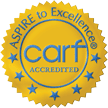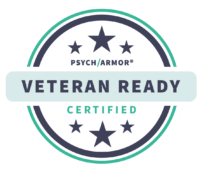What is SMART Recovery, and Why Might You Use It?
As people move from the crisis treatment of addiction into more stable recovery, they begin to understand what adds to their wellness motivation. More importantly, they start to realize not only how to work the 12-Steps to their advantage, but also consider other types of support programs to expand their perspective. One such example is SMART Recovery.
What is SMART Recovery?
In 1994, a collective of mental health experts developed SMART: Self-Management and Recovery Training. The program provides services for people after treatment from alcohol use disorder (AUD) and substance use disorder (SUD).
The principles of SMART are based on guidelines established through abstinence as well as cognitive behavioral therapy and another method, Rational Emotive Behavior Therapy (REBT), first developed in the 1950s by psychologist Albert Ellis. Individuals learn how to change emotional reactions and belief systems as means to alter actions that may trigger self-destructive behaviors. It’s a form of empowerment: once you understand your perception of events or circumstances, you work through the emotions that once triggered unwanted or damaging behaviors. This is extremely helpful for a person in recovery.
The SMART Recovery method is approved by organizations such as American Academy of Family Physicians, the National Institute on Alcohol Abuse and Alcoholism, and the National Institute on Drug Abuse.
In the program, individuals use REBT through a four-point program:
- Construct and maintain motivation to abstain
- Deal with urges
- Handle thoughts and feelings through effective action
- Create a balanced life
What’s also helpful is that individuals view the past as a learning tool, not as a constant point of reference for addictive behavior. The goal is to take ownership of current emotions and behaviors to change them for the better.
SMART Recovery doesn’t encourage participants to admit powerlessness over addiction. Instead, it shifts what’s known as their “locus of control.” This means that instead of thinking they don’t have any choice in what happens to them, they learn to recognize they have power over their choices. Additionally, the program refuses labels such as alcoholic or addict. It doesn’t necessarily emphasize the scientific concept of addiction as a brain disease, but proponents state the principles work whether or not someone believes that.
The SMART method is a secular approach, and is often used in conjunction with 12-Step and other peer support programs. But one notable difference between the two philosophies is that SMART is structured to help individuals move beyond addiction with its key behavioral changes and be “recovered,” whereas most 12-Step programs have the concept that recovery is an ongoing lifestyle and that people avoid relapse “one day at a time.”
SMART Stages of Change
Participants are encouraged to create SMART goals. According to the organization’s website, this means they must be:
- Specific. This helps define what you want to achieve. “Broad goals like ‘I want to feel happier’ are a start, but they lack the detail necessary to guide actionable steps. A more specific goal might be, ‘I will engage in a hobby I enjoy for at least an hour three times a week’,” the site states.
- Measurable. Establishing certain objective parameters such as amounts, durations, or frequency provides a guide to action. For example, “‘I will attend two support meetings per week’ is a measurable goal.”
- Agreeable. Your goals should align with your “ inner values, desires, and personal recovery commitments.” This directive helps ensure they’re something you intend to stick with because they matter to you.
- Realistic. It’s important to develop a sense of balance between goals that “stretch you beyond your comfort zone but still remain achievable based on your current resources, circumstances, and commitments.” This approach adds to your motivation and expands your progress.
- Time-bound. To promote accountability and support measurable results, each goal should have a particular time frame or deadline. It could be “a daily goal like ‘I will practice mindfulness after breakfast every day’ or a long-term goal like ‘I will complete a recovery workbook within three months,’” SMART Recovery explains.
The method also incorporates six particular stages:
- Pre-contemplation: An individual doesn’t know of the behavioral problems or isn’t interested in change.
- Contemplation: Now aware of potential problems, a person may desire change but might not be confident or committed to it.
- Preparation: The participant accepts responsibility for behavioral changes and develops a plan and goals to do so.
- Action: The change process is self-directed as someone becomes more aware and can overcome unwanted behavior.
- Maintenance: A person develops new patterns and aspects of self-control for a period of time, but is cognizant of high-risk situations.
- Graduation/Exit: The individual is now consistently confident, in control, and reflects new beliefs and behaviors that enable a healthier, more progressive lifestyle.
SMART Recovery offers both in-person and online meetings around the world so people can form a community and learn from each other, but unlike most 12-Step programs, there isn’t a sponsor/sponsee relationship.
Expand Your Possibilities at Seabrook
Since the Seabrook Model focuses on whole-person wellness, you have the opportunity to explore many aspects of mind, body, and spirit health to solidify your sobriety decision. Seabrook has four award-winning addiction treatment centers in New Jersey with board-certified staff members who meet you where you are in the moment but also provide essential tools to help you build the future you want.




